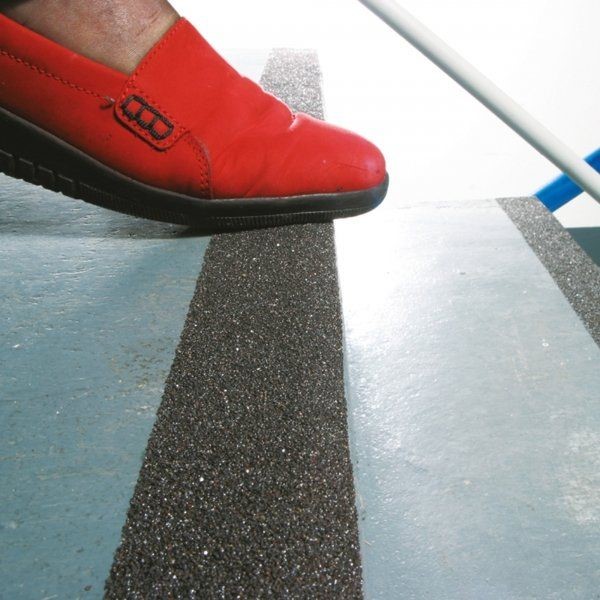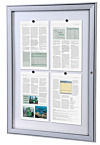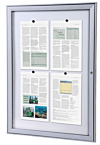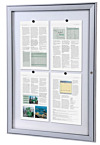
In industrial environments, workplace safety isn't just about meeting regulatory requirements—it's about protecting your most valuable asset: your workforce. Among the many safety measures facilities implement, anti-slip floor tape has emerged as an essential tool in preventing slip and fall accidents, which continue to be among the most common workplace injuries in UK manufacturing and warehousing facilities.
According to the Health and Safety Executive (HSE), slips, trips, and falls account for over 29% of non-fatal workplace injuries in the UK, resulting in over 1.5 million lost work days annually. Beyond the human cost, these incidents carry significant financial implications through compensation claims, increased insurance premiums, and lost productivity.
Understanding Anti-Slip Floor Tape for Industrial Applications
Anti-slip floor tape is specifically designed to increase traction on walking and working surfaces, particularly in areas prone to moisture, oil spills, or other substances that create slippery conditions. Unlike standard floor marking tape, anti-slip varieties incorporate grit or textured surfaces that provide foot traction even in challenging conditions.
"Many facilities underestimate the importance of choosing the right anti-slip tape for their specific environment," explains Malcolm Hall, Managing Director at Hall-Fast. "Using general-purpose tape in demanding industrial environments can create a false sense of security when that tape begins to fail prematurely."
Key Factors in Selecting Anti-Slip Floor Tape
- Environment-Specific Requirements
Different industrial environments place unique demands on floor safety products:
Manufacturing Floors
- Oil and chemical resistance is critical
- Must withstand heavy foot traffic and equipment movement
- Should resist degradation from cleaning chemicals
Food Processing Facilities
- Must meet food safety regulations
- Should withstand frequent washing and sanitizing
- Must be resistant to food acids and processing chemicals
Cold Storage and Freezers
- Requires special adhesives designed for low temperatures
- Must maintain flexibility and grip in cold conditions
- Should resist condensation issues during temperature fluctuations
Outdoor Loading Areas
- UV resistance to prevent degradation from sunlight
- Must perform in variable weather conditions
- Should drain effectively to prevent water pooling
- Grit Level and Surface Texture
Anti-slip tapes come in various grit levels, measured similar to sandpaper. The appropriate grit depends on your specific application:
Coarse Grit (60-80 grit)
- Maximum slip resistance
- Ideal for wet areas and ramps
- May collect debris more readily
- Can be uncomfortable for barefoot areas (changing rooms, etc.)
Medium Grit (80-100 grit)
- Balanced traction and comfort
- Good for general industrial applications
- Less prone to debris collection than coarse grit
Fine Grit (100+ grit)
- More comfortable for foot traffic
- Easier to clean but provides less aggressive traction
- Suitable for drier environments with light contamination
"Understanding the relationship between grit level, traction, cleaning requirements, and durability is essential to making the right selection," notes Hall. "There's always a balance to be struck between maximum grip and practical maintenance."
- Compliance with Regulations and Standards
In the UK, various regulations govern floor safety in industrial environments:
- The Health and Safety at Work Act 1974 places general duties on employers to ensure workplace safety, including floor conditions.
- The Workplace (Health, Safety and Welfare) Regulations 1992 specifically requires that floor surfaces be suitable for the purpose, properly maintained, and free from substances that might cause slips.
- BS 7976-2:2002+A1:2013 provides the Pendulum Test method for measuring slip resistance.
- BS 8300:2009+A1:2010 offers guidance on slip resistance for accessibility.
For specific industries, additional regulations may apply:
- Food processing facilities must comply with hygiene regulations that impact flooring choices
- Healthcare facilities have specific infection control requirements
- Electronics manufacturing may have ESD (Electrostatic Discharge) requirements
Quality anti-slip tape suppliers should be able to provide documentation showing how their products help meet these regulatory requirements.
- Durability Factors
The durability of anti-slip tape in industrial environments depends on several factors:
Adhesive Quality The adhesive is often the first point of failure in floor tapes. Look for:
- Aggressive initial tack that creates a strong bond
- Good shear resistance to prevent shifting under foot traffic
- Resistance to the specific chemicals and cleaning agents used in your facility
Backing Material Common backing materials include:
- Aluminium: Extremely durable and conforms well to irregular surfaces
- PVC: Good general-purpose option with moderate durability
- Fiberglass: Excellent for wet areas with high traffic
Edge Design Bevelled edges reduce the likelihood of tape catching on equipment wheels or boots, which can cause premature lifting and failure.
Thickness Thicker tapes (generally 20-30 mils) typically offer better durability but may present more of a trip hazard if edges begin to lift.
Installation Best Practices for Maximum Performance
Even the highest quality anti-slip tape will fail prematurely if not properly installed. Key installation considerations include:
Surface Preparation
- Thoroughly clean the surface with appropriate degreasers
- Ensure the surface is completely dry before application
- Use recommended primers on porous or challenging surfaces
- Maintain minimum application temperature (typically 10-15°C)
Application Method
- Remove backing gradually to prevent misalignment
- Use a roller to apply firm, even pressure
- Pay special attention to edges to prevent premature lifting
- Allow full adhesive cure time (typically 24-72 hours) before subjecting to heavy traffic
Edge Sealing In particularly challenging environments, edge sealing compounds can significantly extend the life of floor tape by preventing moisture and contaminants from compromising the adhesive.
Cost Considerations: Value vs. Price
When evaluating anti-slip tape options, looking beyond the immediate purchase price is essential:
Initial Costs
- Material cost per linear meter
- Installation labour and downtime
- Surface preparation requirements
Lifecycle Costs
- Expected lifespan in your specific environment
- Frequency of replacement
- Maintenance requirements
Risk Mitigation Value
- Potential reduction in workplace accidents
- Lower insurance premiums
- Reduced liability exposure
"We often see facilities make the mistake of choosing the cheapest anti-slip tape available, only to find themselves replacing it frequently, which costs more in both materials and labour over time," Hall points out. "Quality anti-slip tape properly matched to the application typically provides the lowest total cost of ownership."
Colour Coding and Visual Communication
Beyond their anti-slip properties, floor tapes are valuable tools in visual workplace management:
Standard Safety Colores
- Yellow: General caution and marking pedestrian paths
- Red: Fire hazards and emergency equipment
- Green: Safety equipment and first aid
- Blue: Equipment and machinery
- Orange: Warning of possible pinch points or moving parts
- Black/Yellow striped: Areas presenting physical or health risks
- Red/White striped: Areas to be kept clear for safety reasons
Glow-in-the-Dark Options Photoluminescent anti-slip tapes provide both traction and visibility during power outages, making them ideal for emergency exits and evacuation routes.
Getting Professional Guidance on Anti-Slip Floor Tape Selection
With so many variables to consider, many facilities benefit from expert guidance when selecting anti-slip floor tapes. The right supplier should:
- Understand your specific industry and application
- Offer samples for testing in your actual environment
- Provide documentation on regulatory compliance
- Offer installation guidelines specific to your facility conditions
For facilities requiring guidance on selecting the right anti-slip floor tape for industrial use, Hall-Fast's industrial commercial equipment specialists can provide expert recommendations based on your specific requirements and environment.
If you need additional assistance in selecting the appropriate anti-slip floor tape for your industrial facility, contact a specialist at Hall-Fast via sales@hall-fast.com for personalized guidance.
Conclusion: A Strategic Approach to Floor Safety
Selecting the right anti-slip floor tape for industrial applications requires careful consideration of your specific environment, regulatory requirements, and performance needs. By taking a strategic approach to this important safety component, facilities can protect their workforce, maintain compliance, and achieve the best value through appropriate product selection and proper installation.
When properly selected and installed, quality anti-slip floor tape is one of the most cost-effective safety investments an industrial facility can make, providing continuous protection against one of the most common workplace hazards.












